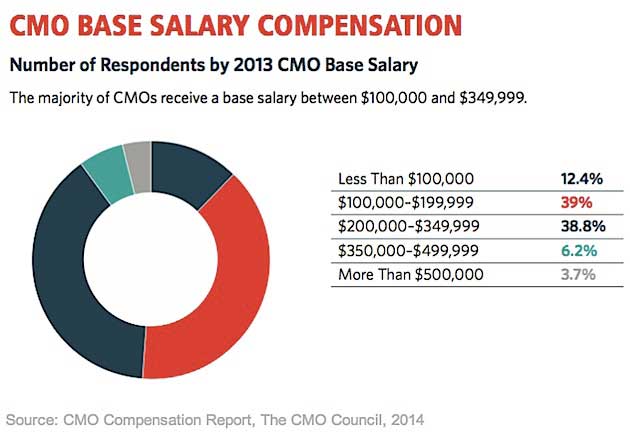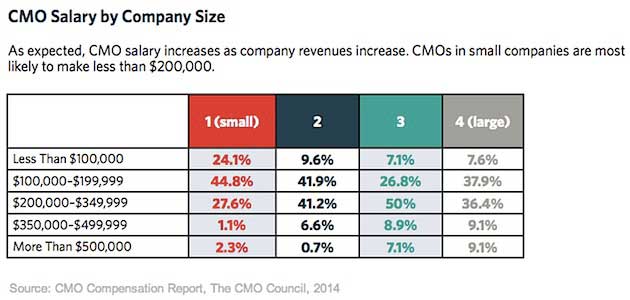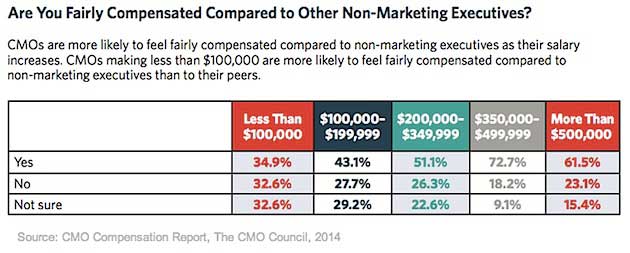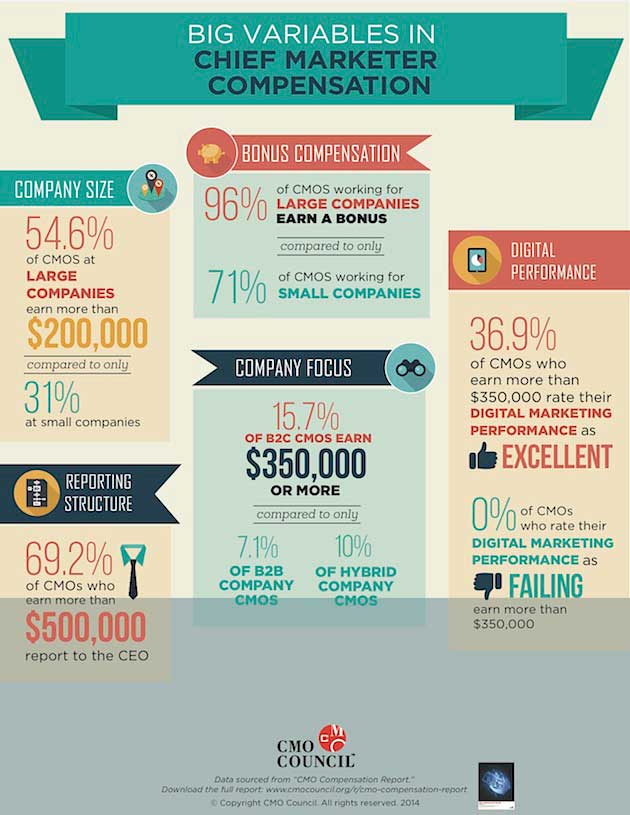Most chief marketers earn between $100,000 and $350,000 per year, according to a recent report from The CMO Council.
Some 12% earn less than $100,000; 39% earn between $100,000-$199,999; 39% between $200,000-$349,999; 6% between $350,000-$499,999; and 4% earn $500,000 or more, the global survey of chief marketers (CMOs, executive vice-presidents, senior vice-presidents, and vice-presidents, depending on the top marketing title in each organization) found.

Below, additional key findings from the report, which was based on 2013 data from a survey of 345 chief marketers from around the world (45% working at B2B-focused companies, 20% B2C, 35% hybrid).
Factors Influencing Pay
- The base compensation of chief marketers was found not to highly correlate with the number of people that the person manages.
- The the head of Marketing's job title (CMO, VP of marketing, SVP of marketing, etc.) also does not seem to correlate with base compensation.
- Compensation was found to correlate to reporting structure: Respondents making more than $500,000 are more likely to report directly to the CEO.
- CMO base compensation is also correlated with firm size. The larger the company, the more likely that the CMO makes more in base compensation and the more likely that he or she receives bonus compensation.

Goals, Accomplishments, and Perceptions
- Marketers earning the highest levels of base compensation (more than $500,000) tend to be focused on driving business performance (e.g., top-line growth, market share, efficiencies, etc.).
- The key accomplishments of the top earners are centered on restructuring marketing to drive results, improving the yield/accountability of marketing, and building digital capabilities.
- Less than half of all respondents (48%) feel fairly compensated.
- Chief marketers are more likely to feel fairly compensated when they make more money.

For more insights from the report, check out the following infographic:
About the research: The report was based on 2013 data from a survey of 345 top marketers (CMOs, executive vice-presidents, senior vice-presidents, and vice-presidents, depending on the top marketing title in each organization) from around the world (45% work for B2B-focused companies, 20% B2C, 35% hybrid).





